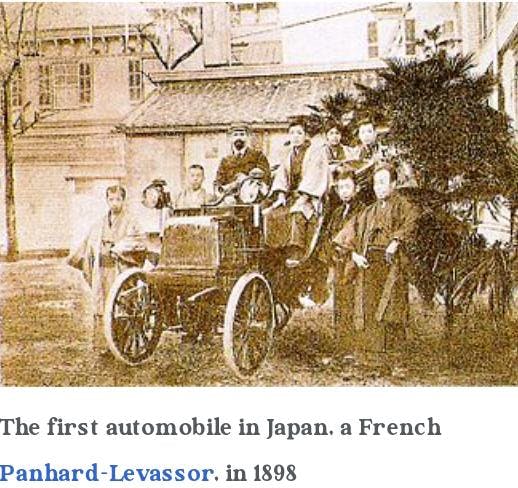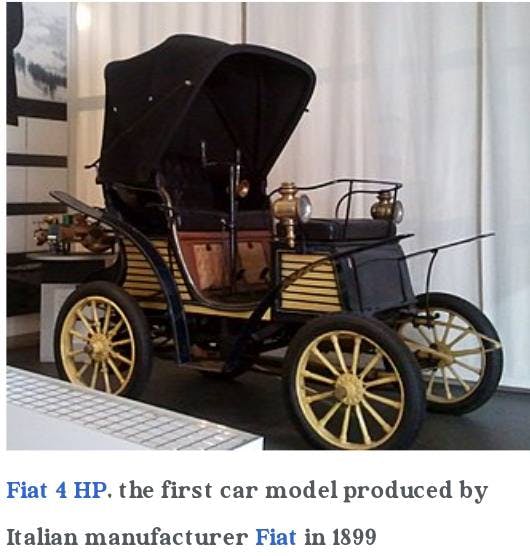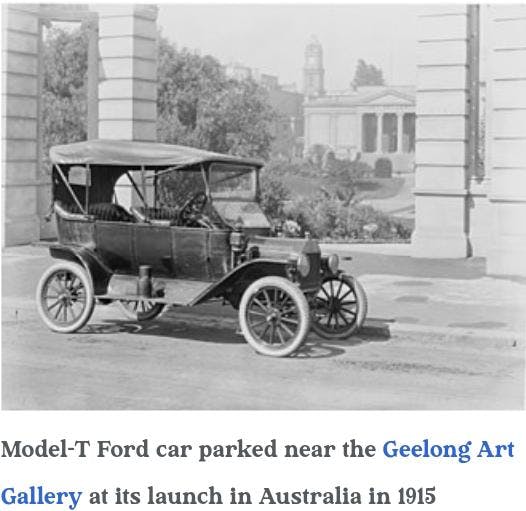History of Automobile: From Beginning
Most. Mobassara Jannat, (IPE 2021-22)
Many of us don’t know about the history of automobile . Do we know that how many era of invention in automobile? How today’s modern vehicles come?
After the invention of wheel , men started to make vehicles to move fast. From the invention of automobile till now, the invention of automobiles are divided into 6 eras .
Horseless Carriage or Veteran Era
In this era, the first automobiles were produced. George B. Selden filed a patent in 1879 with the application of the engine in a four wheeled car, leading to a delayed grant in 1895. He licensed his patent to major American automakers.

The first automobiles were produced by Carl Benz in Germany in 1888, and mass production began in France and the United States around 1900. Panhard et Levassor in France and Peugeot were among the early automobile manufacturers. The United States saw experimentation with various prototypes, including steam-powered and electric vehicles.

The Duryea Motor Wagon Company (1893) and the Autocar Company (1897) were among the first American automobile manufacturers. Ransom E. Olds and the Oldsmobile Curved Dash, along with other companies like Cadillac, Winton, and Ford, played significant roles in the industry. The Studebaker brothers transitioned from horse-drawn vehicles to electric automobiles in 1902.

The first motor car in Central Europe was produced by Nesselsdorfer Wagenbau (later Tatra) in 1897. Louis Renault modified a De Dion-Bouton in 1898, and by 1900, mass production of automobiles had started in France and the United States.
Brass/Edwardian Era
Lasting from approximately 1905 to 1914, this period is characterized by experimental designs and the use of brass in vehicles. Standardized automobiles with front-engine, rear-wheel drive, and internal combustion engines emerged, such as those produced by Panhard et Levassor's Système Panhard.

Steam cars were among the fastest road vehicles in the early 1900s.Significant technological advancements included the electric ignition system, independent suspension, and four-wheel brakes. Between 1907 and 1912, the high-wheel motor buggy was popular in the United States. The 1908 New York to Paris Race marked the first circumnavigation of the world by automobile.

The period witnessed the development of spare tires, and Rambler became the first car company to equip its cars with one in 1909.Examples of cars from this era include the Ford Model T, Hudson Model 20, Morgan Runabout, Mercer Raceabout, and Bugatti Type 13.
Vintage Era
Timeline
The vintage era spanned from the end of World War I (1918) to the Wall Street Crash in 1929.
About
Front-engine cars dominated, with closed bodies and standardized controls started becoming common in this era.

People shifted from open cars (1919) to closed cars (1929). Rapid development of internal combustion engines, including multivalve and overhead camshaft engines took place in this time period. People got the Introduction of V8, V12, and V16 engines for luxury cars.

Key innovations like hydraulic brakes (1921) and the first automatic transmission (1924).Pontoon design introduced, eliminating fully articulated fenders and running board also took place.
Pre-War Era
Timeline
The pre-war era started with the Great Depression in 1930 and ended with the recovery after World War II, approximately in 1946.
About
It was in this period that integrated fenders and fully closed bodies became standard, phasing out open-top runabouts and touring cars. Mechanical technology used in contemporary automobiles largely invented by the 1930s.

Introduction of advanced technologies like front-wheel drive (1934) and independent suspension (1933).

Market consolidation and decline in the number of auto manufacturers due to the Great Depression Examples of pre-war cars include the Ford V-8, Tatra 77, Bugatti Type 57, and Rolls-Royce Phantom III.
Postwar Era
Timeline
The postwar era commenced after World War II, around 1946.
About
Pontoon style, integrating fenders into the body became popular in this era.US saw the introduction of high-compression V8 engines and modern bodies. Unibody construction, strut-suspended designs, and other innovations took place in this era. Globalization of automobile markets, with compact cars like the Mini and Fiat 500 gained popularity.

Competition and changes in the US market with the rise of imported cars and the muscle car era. Technological advancements included independent suspensions, fuel injection, and an emphasis on safety took place. Major events like the 1973 oil crisis and stricter emissions control reshaped the industry.

Growth of the subcompact segment and increasing popularity of noncommercial all-wheel-drive vehicles was noticeable. Japan emerged as a significant car-producing nation. Some examples of postwar cars are the GAZ-M20 Pobeda, Morris Minor, Citroën DS, and Volkswagen Beetle.
Modern Era
Timeline
The modern era, as of the provided information, is generally defined as the 40 years preceding the current year.
Characteristics
Standardization and Platform Sharing
Increasing trend of standardization, platform sharing, and computer-aided design to reduce costs and development time.
Electronics Integration
Growing use of electronics for engine management and entertainment systems.
Technological Developments
Proliferation of front- and all-wheel drive.
Adoption of diesel engines.
Ubiquity of fuel injection.
Most passenger cars adopting front-wheel-drive monocoque or unibody designs.
Body Styles
Dominance of hatchbacks, sedans, and sport utility vehicles (SUVs) in the market.
Evolution of SUVs into high-powered luxury crossovers.
Rapid Technological Advancements
Improvements in fuel efficiency and engine output.
Computerized engine management systems easing automobile emissions concerns.
Financial Crisis Impact (2007–2008)
Significant decline in light vehicle sales from major automakers.
Chrysler, Toyota, Ford, Nissan, Honda, and General Motors experienced sales reductions.
Global Shifts
China emerges as the world's largest car manufacturer since 2009, surpassing Japan, the US, and Europe.
Growth in transnational corporate groups, sharing platforms and adopting badge engineering.
Award Competitions
- Recognition of notable cars and trucks through competitions like European Car of the Year, Car of the Year Japan, and others.
Examples of Modern Cars
Oldsmobile Toronado (1966–1992): First modern-era American car with front-wheel drive. Introduced electronic antilock braking system and airbag.
Mercedes-Benz S-Class (1972–present): Introduces seat belt pretensioner and electronic traction control system.
BMW 3 Series (1975–present): Featured on Car and Driver magazine's annual Ten Best list 17 times.
Honda Accord (1977–present): Japanese sedan that gained popularity in the US.
Chrysler Minivans (1983–present): Two-box minivan design influencing the market.
Renault Espace (1984–present): First mass one-volume car of the noncommercial MPV class.
Ford Taurus (1986–2019): Midsized front-wheel drive sedan dominating the US market in the late 1980s.
Toyota Prius (1997–present): Popular hybrid electric vehicle launched in the Japanese market.
Ford Focus (1998–present): Popular hatchback, Ford's bestselling world car.
Tesla Roadster (2008–2012): First highway-capable all-electric vehicle in serial production, sold about 2,500 units worldwide.
Nissan Leaf and Chevrolet Volt (2010–present): Nissan Leaf is the world's all-time bestselling highway-capable electric car. Chevrolet Volt is a best-selling plug-in hybrid.
Tesla Model S (2012–present): Plugin electric vehicle ranked as the world's bestselling plugin electric vehicle in 2015.

We are now looking for more innovations in automobile sector.
